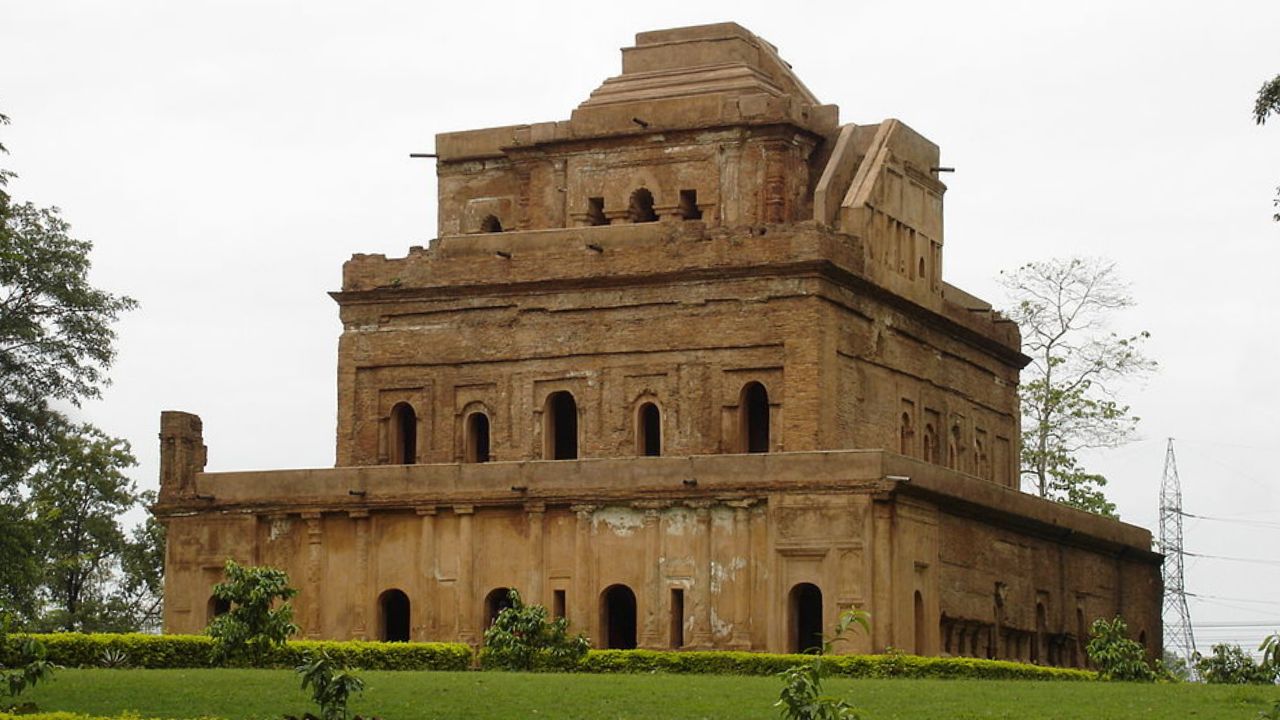The Ahom Kingdom, spanning six centuries, played an influential role in shaping Assam’s history. Let’s traverse the journey of this magnificent kingdom and understand its significance.
Introduction to Ahom Kingdom
Nestled in the verdant hills and plains of Assam, the Ahom Kingdom carved its niche as one of the longest-ruling dynasties in Indian history. But how did it all begin?
Origin and Establishment
Migration from Yunnan Province
Originating from the Yunnan Province in China, the Ahom people traversed challenging terrains, crossing mountains and rivers, to reach the Brahmaputra Valley in the 13th century. Their migration story is not just about a change in location; it’s a testament to their resilience and quest for a new homeland.
Sukaphaa: The Founding King
King Sukaphaa, the first Ahom king, laid the foundation of the Ahom Kingdom in 1228 AD. His leadership, vision, and ability to assimilate with the indigenous tribes set the tone for the kingdom’s inclusive growth.

Ahom Dynasty
Administration and Governance
Paik System
One of the hallmarks of the Ahom administration was the Paik System, a quasi-feudal system where every individual offered services to the state. Doesn’t this system make you ponder upon the adaptability of ancient kingdoms?
Role of Gohain
Gohains, the nobles, were pillars of Ahom governance. They ensured smooth functioning at both central and provincial levels, striking a delicate balance between power and responsibility.
Military Might and Conquests
Key Battles
The Ahoms were fierce warriors. Their notable battles against the Mughals showcased their strategic acumen and indomitable spirit. Isn’t it fascinating how they repeatedly thwarted the Mughal advances?
Expansion of Territories
The Ahom territory expanded under successive kings, stretching from parts of modern-day Bangladesh to Arunachal Pradesh. Such vastness, much like an ever-expanding canvas, is a testament to their vision and ambition.

Art, Culture, and Architecture
Temples and Monuments
From the Sivasagar temples to the Kareng Ghar, Ahom architecture showcases an amalgamation of indigenous styles and influences from their ancestral lands. Have you ever thought about the tales these structures might whisper if they could speak?
Legacy in Assamese Culture
Bihu, the vibrant festival of Assam, owes its grandeur to Ahom patronage. The Ahoms not only ruled but enriched Assam’s cultural tapestry, intertwining their legacy with the region’s ethos.
Decline and Fall
Like every great dynasty, the Ahom Kingdom too faced its sunset. Internal conflicts and external invasions in the 18th century marked its decline, leading to the Burmese conquest and subsequently, the British annexation.
Legacy and Modern Day Significance
Even today, the Ahom legacy resonates in Assam’s culture, traditions, and landmarks. They’re not just rulers of a bygone era; they’re architects of Assam’s rich heritage.
The Ahom Dynasty of Assam
A remarkable chapter in the history of Assam, the Ahom Dynasty reigned for nearly six centuries, leaving an indelible mark on the region’s culture, politics, and society.

Origins of the Ahom Kingdom
Migration from Yunnan:
The Ahom people, originally from the Yunnan region of China, migrated to Assam in the 13th century. Led by their leader Sukaphaa, they traversed challenging terrains, forging a new destiny in the fertile Brahmaputra Valley.
Founding of the Dynasty:
Upon arrival, Sukaphaa established the Ahom kingdom in 1228, marking the onset of a new era in Assamese history.
Golden Era of Ahom Dynasty
Achievements and Expansions:
Under illustrious leaders like Suhungmung and Supangmung, the Ahom dynasty expanded its territories, assimilating various tribes and establishing a robust rule.
Cultural Impact:
The Ahoms significantly influenced Assamese culture. From introducing new festivals like Bihu to promoting literature, their reign was a renaissance of sorts.

Talatal Ghar
Administration and Governance
Ahom Laws:
The Ahoms were just administrators. They had a comprehensive legal system, ensuring fairness and justice.
Military Strategies:
With a potent army, the Ahoms developed strategic forts and innovative guerrilla warfare techniques that kept invaders at bay.
Decline of the Dynasty
Internal Conflicts:
Over time, internal power struggles weakened the kingdom, paving the way for external invasions.
External Threats:
Mughals and other neighboring dynasties attempted invasions, further destabilizing the Ahom rule.
Legacy of the Ahom Dynasty
Influence on Assamese Culture:
The Ahoms’ impact on Assam is palpable even today. Their contribution to language, festivals, and traditions remains significant.
Architectural Marvels:
Temples, palaces, and monuments constructed during the Ahom era, like the Talatal Ghar, stand as testimonials to their architectural prowess.
Conclusion
Spanning over 600 years, the Ahom Dynasty’s influence on Assam is profound. Their legacy, rich in culture, governance, and architecture, continues to shape Assamese identity, making them an integral part of India’s historical tapestry.
The Ahom Kingdom’s saga is a blend of valor, vision, and legacy. As we look back, it stands as a beacon of Assam’s glorious past, inspiring generations to remember and cherish their roots.
FAQs
Who was the first king of the Ahom Kingdom?
Sukaphaa was the founding king of the Ahom Kingdom.
How long did the Ahom Kingdom rule?
The Ahom Kingdom ruled for nearly 600 years, from 1228 to 1826 AD.
What was the Paik System?
It was a unique administrative system where every individual rendered services to the state.
Did the Ahoms resist Mughal invasions?
Yes, the Ahoms successfully resisted multiple Mughal invasions, particularly in the Battle of Saraighat.
Where can one see remnants of Ahom architecture today?
Sivasagar, in Assam, is home to many historic Ahom monuments and temples.
When did the Ahom Dynasty begin in Assam?
The Ahom Dynasty was established in 1228 by Sukaphaa.
Where did the Ahoms originally come from?
They migrated from the Yunnan region of China.
What were the significant achievements of the Ahom Dynasty?
They expanded territories, influenced culture, and introduced innovative governance systems.
Why did the Ahom Dynasty decline?
Due to internal conflicts and external threats, especially from the Mughals.
What are some famous architectural landmarks from the Ahom era?
Structures like Talatal Ghar and Rang Ghar are iconic remnants of the Ahom reign.







